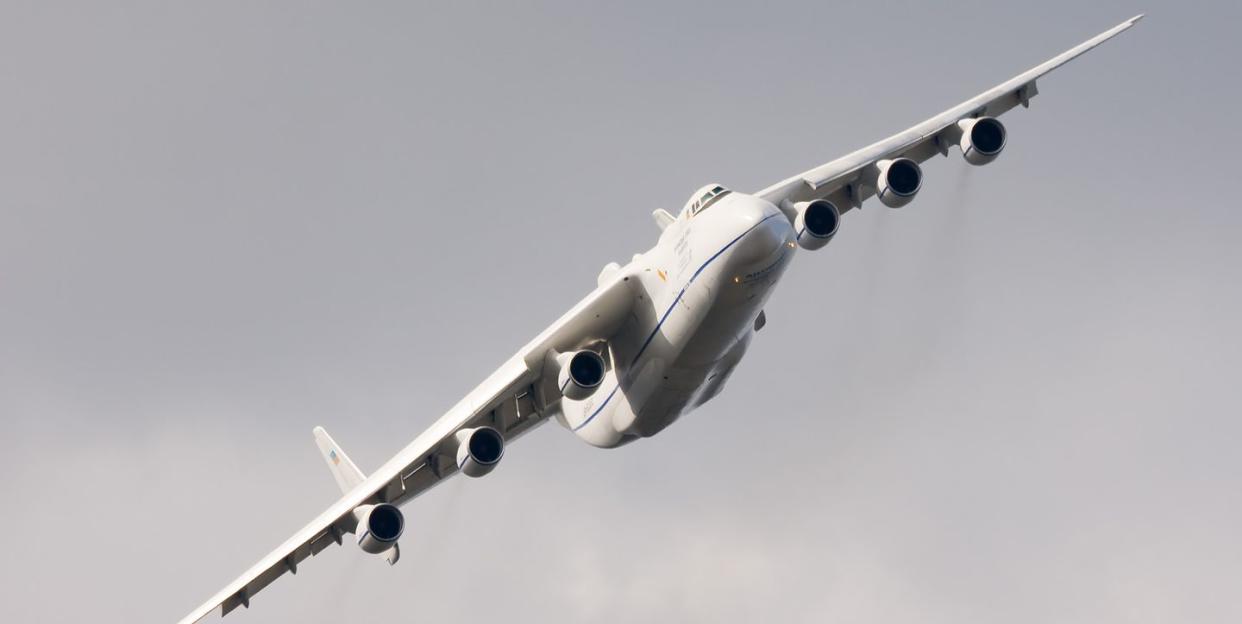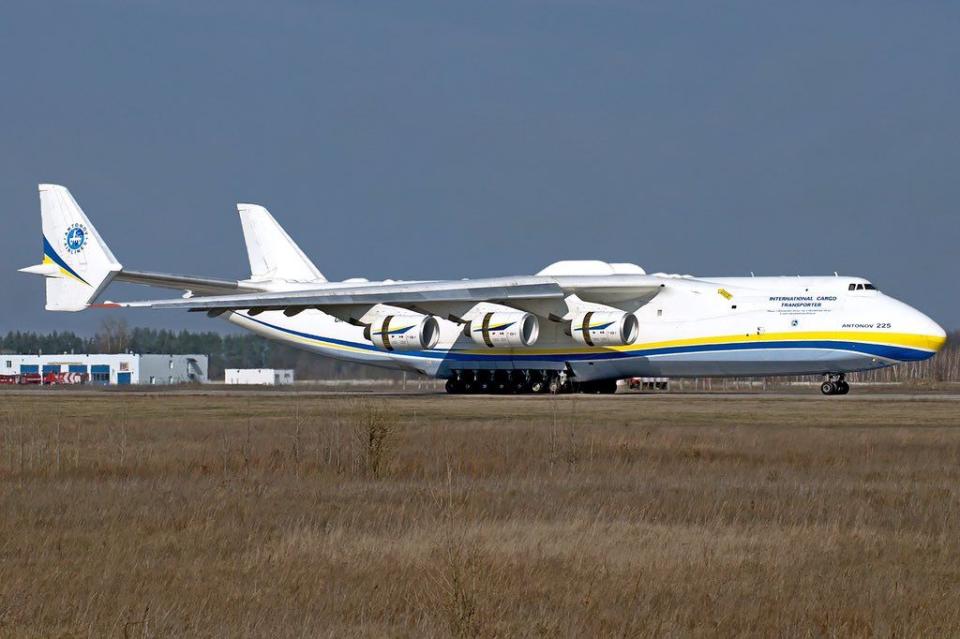The World’s Largest Airplane Flies Again

The alert from FlightRadar24.com popped up on aviation enthusiasts’ smartphones early this morning: the Antonov AN-225 was finally on the move, after 18 long months of inactivity.

Those who know the monster cargo airplane and eagerly track its global delivery movements—myself included—long ago set up alerts with the flight-tracking website for every time the big airplane takes off. However, since it entered a major maintenance and upgrade program in October 2018, it’s been nothing but stony silence.
Until today. The six-engine, 290-foot wingspan, 600,000-pound cargo craft—nicknamed Mriya, for “dream,” and originally built in the late 1980s to serve as a ferry aircraft for the Soviet Union’s short-lived space shuttle effort—lifted off from its home airport in Kiev, Ukraine for its first test flight before returning to service, presumably within weeks.
The flight lasted two hours, with the aircraft completing two laps above the Ukrainian countryside before returning to Antonov Aiport (GML). The airstrip is owned by the company and serves as the primary R&D and flight test center for its heavy-duty cargo aircraft.

The strategic lifter, registered UR-82060, has grown famous not just for its outlandish dimensions—the aircraft is the heaviest in the world, and it has the longest wingspan of any aircraft in operation—but also for lifting incredible loads and delivering them long distances. The AN-225 holds multiple world records, including the delivery of the single heaviest cargo item ever, a generator weighing 417,000 pounds.
Its maximum cargo lifts have been up to 550,000 pounds—maximum takeoff weight is 1.4 million pounds—and it can also handle unwieldy cargo, such as long wind-turbine blades. Its services are routinely contracted by heavy industry and governments, including the U.S. military, and enthusiasts routinely show up at airports to watch it in action.
With its distinctive twin-tail assembly and slouching wings, each loaded with six massive turbofan engines, the aircraft is a combination of old-school design and modern innovations. It includes a fly-by-wire control system and triple-redundant hydraulics, and its main landing gear has 32 wheels. Its nose gear can lower to facilitate the loading of cargo through the nose. (There’s no rear cargo access, unlike most such aircraft.)

Mriya’s pressurized cargo hold has a 46,000-cubic-foot capacity. While Antonov hasn’t disclosed yet what upgrades the aircraft received during this maintenance break, it’s known to have received improved avionics and at least one new engine from supplier Ivchenko-Progress.
Tracking the aircraft is a perennial spectator sport, as Antonov doesn’t publish its schedule. But it routinely shows up in far-flung places like West Africa, remote corners of South America, or the Australian Outback—in addition to more familiar destinations in Europe, the Middle East, and Asia. It has come to the U.S. on occasion, as well.
The AN-225’s smaller sibling, the AN-124 Ruslan, is a much more common sight, and equally impressive in its own right. There’s also a second AN-225 that has been sitting in a state of only partial completion for decades. In 2016, Antonov initiated efforts to complete it, but there have been few updates since then.
During a period when aviation enthusiasts are enduring a pretty grim reality along with everyone else, seeing the AN-225 return to the skies generated a little ray of light this morning. But it’s a bittersweet prospect: With the world sinking into an unknown new state that could demand the shipment of huge volumes of emergency supplies, Mriya, which is routinely enlisted during natural disasters, will undoubtedly see lots of action in the coming months—and enthusiasts will have yet another reason to appreciate the big bird.
You Might Also Like

